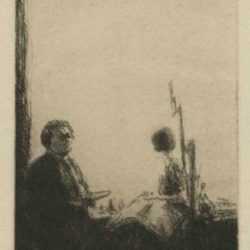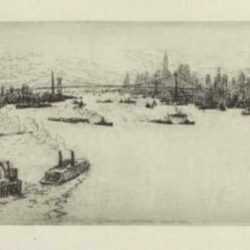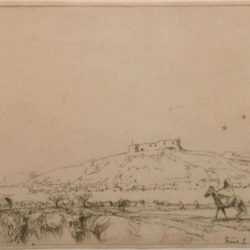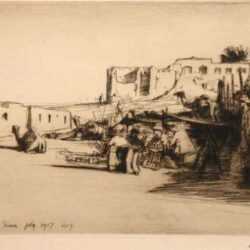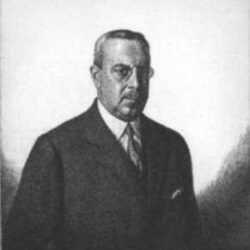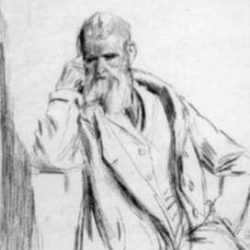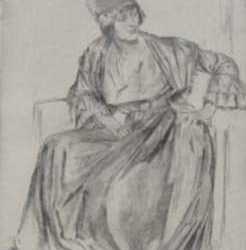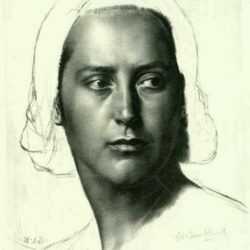Filter by Type
Filter by Category
Filter by Size
Filter by Year
Artists
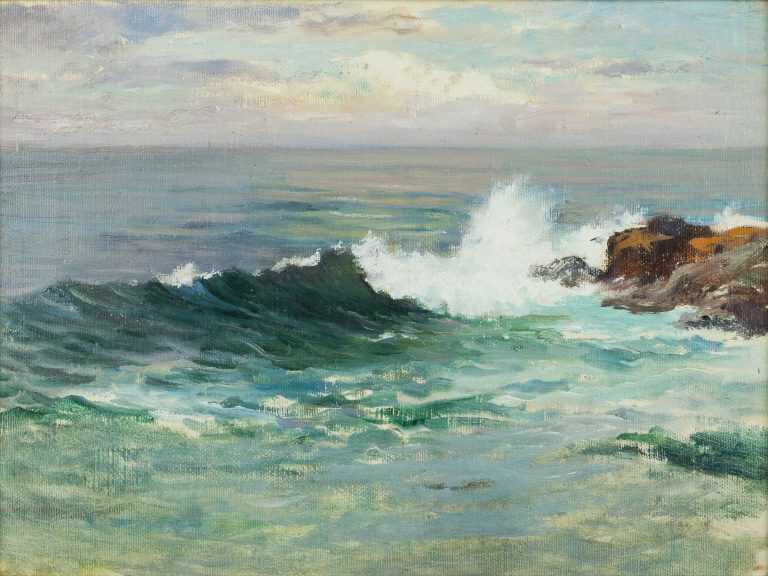
William Partridge Burpee
American, (1846-1940)
William Partridge Burpee was born in Rockland, Maine on April 13, 1846 to Nathaniel A. and Mary Partridge Burpee. As a young man he was educated in Rockland schools and in the Kents Hill Academy in Readfield, Maine. He exhibited a great deal of interest as a youth in painting and drawing, and received his formal training from the marine painter, William Bradford (1823-1894) – probably in the late 1870s. Burpee’s early work of the 1880s reflects Bradford’s influence as well as other painters such as Fitz Hugh Lane, Frederic Edwin Church, Martin Johnson Heade, F. A. Silva and A. T. Bricher.
After briefly advertising himself as an artist in the Rockland City Directory in 1882, Burpee appeared that year in Boston. By September 1, 1885, he was painting figures on Lynn Beach, Massachusetts, between Nahant and Swampscott in a style that now reflected the influence of French painting – particularly Eugene Boudin and Emile Louis Vernier. He showed life of the beach with children at play, dorymen, lobstermen, netmenders, women waiting for the return of the boats, clamdiggers, and drying and folding sails. He began exhibiting in Boston in 1881 (Massachusetts Charitable Mechanics Association) and soon became a regular exhibitor (1890) and a member (1894) of the Boston Art Club. Until his trip abroad, Burpee maintained a position in bookkeeping and accounting.
In 1897, Burpee left Boston to tour Spain, Italy, France and England. He returned to the United States in 1899 and the next year returned to spend the summer in Holland. After his international travel and visits to the salons in Paris he became much more international in his viewpoint and his style became much more impressionistic. During the summer in Holland, he discovered pastel and soon developed a great facility and liking for the medium.
He was honored at the St. Louis Exposition of 1904 with a bronze medal for pastel. He also exhibited at the Pennsylvania Academy of Fine Arts, the Art Institute of Chicago, the Corcoran Gallery, Washington D.C., the American Watercolor Society, the L. D. M. Sweat Museum (now Portland Museum of Art), the Boston Society of Watercolor Painters and the Copley Society, Boston.
Burpee is last listed with a Boston address in 1913. He reappears in Rockland in 1914 and is listed as dividing his time from 1927-1933 between Rockland and East Orange, N.J. He died in Rockland, Maine in 1940.
His work is in the permanent collections of the Museum of Fine Arts, Springfield, Massachusetts, the Rockland Public Library, Cheekwood, Nashville, Tennessee, Columbia Museum of Art, Columbia, S.C., the Louisiana State University Museum of Art, the William A. Farnsworth Museum, Rockland, Maine, and the Portland Museum of Art, Maine. For more information see: William Partridge Burpee: American Marine Impressionist by D. Roger Howlett. Burpee is also one of the seven “Lynn Beach Painters” described in the 1994 book, The Lynn Beach Painters: Art Along the North Shore 1880 - 1920 also by Howlett.
Works by William Partridge Burpee

Stow Wengenroth
American, (1906-1978)
Born in Brooklyn at the turn of the century, Stow Wengenroth was the only child of an architect and a textile designer. Stow moved into the artistic realm of his parents only during his last year in high school. He then studied at the Grand Central School of Art under Wayman Adams. However, he did not start working with his trademark medium until 1930, when another mentor, George Pearse Ennis, whom he met at the Eastport Summer School of Art, suggested he try lithography.Although he traveled to Europe, Wengenroth moved between New York and Maine and it was their city and sea scapes that acted as his inspiration. Sand dunes, trees, lighthouses, and the occasional towering skyline were the themes for his work presented in shows in New York galleries such as the Kennedy and Macbeth, as well as the Whitney museum. From his start with lithography in the 1930's, Stow flourished in printing, publishing, and exhibiting his works for two decades; he was one of the only artists of his time to support himself with his prints alone. In 1938 he became an associate member then a full member in 1941 of the National Academy of Design. Wengenroth also exhibited his work at the 1939 World’s Fair. All was well received and he was renowned for his mastery of the black and white medium, his ability to create heavy moods with his cool shadows and quiet highlights. In 1978 his emphysema ended his life, leaving 369 prints behind, only one of which was damaged during the process, a fact that demonstrates his attention to detail and careful precision that is so evident in his prints.
Biography courtesy of Ronald and Joan Stuckey, "Stow Wengenroth’s Lithographs"
Works by Stow Wengenroth
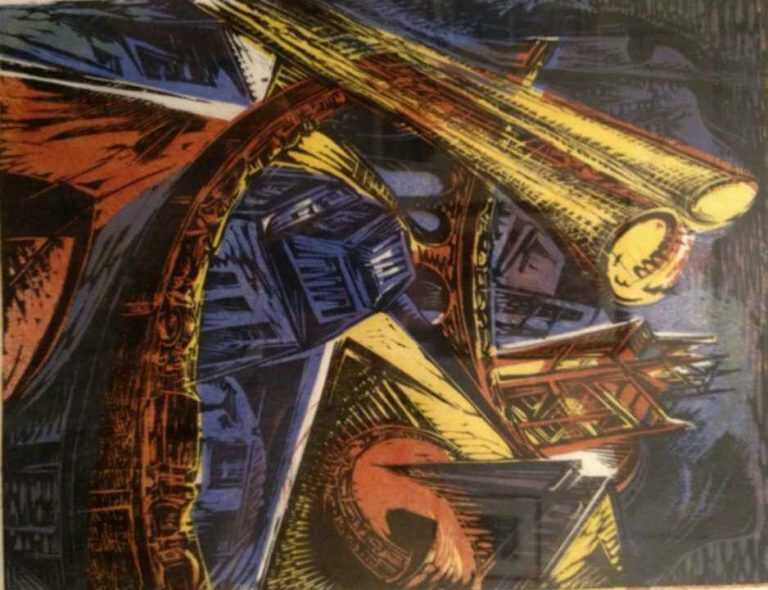
Letterio Calapai
American, (1902-1993)
Letterio Calapai made for himself a fruitful artistic career that spanned well over fifty years, during which he was deemed “a printmaker for the twentieth century” by The Chicago Sun-Times in 1984. The son of Sicilian immigrants, Calapai was born and raised in Boston, Massachusetts. Although the Calapai family was not monetarily wealthy, their lives were “rich in the pleasures of music, poetry, and art.” Both the artist’s mother and father made every effort to expose their son to the arts; his father recited poetry, his mother played the piano, and together they provided Calapai with violin lessons. During his childhood, Calapai frequented the Museum of Fine Arts in Boston and the Fogg Art Museum in Cambridge. There, his exposure to the work of the Old Masters would come to have a profound influence on his art; as he later declared, “their realism was my goal…” John Taylor Arms recognized the artist’s unique appreciation for the Old Masters and said of Calapai, “He wants to study the great men. Very often the artist just wants to study his own ability.” Calapai’s interest in art continued to flourish at East Boston High School where he earned impressive grades and exhibited great artistic talent, particularly at drawing. His high school art history teacher, recognizing his notable artistic skill, gave him a paint box and brushes as a graduation present. Calapai recalled that “this wonderful gift was a tangible sign that I really did have some talent. It was the inspiration that led to the beginning of my career as an artist.”
Calapai embarked upon this career at the Massachusetts Normal Art School (today known as the Massachusetts College of Art) where he turned his attention to painting. He received a two-year scholarship to the School of Fine Arts and Crafts in Boston after proving his exceptional artistic ability with several oil paintings. Under the instruction of Charles Hopkinson, Calapai excelled in figure painting and planned to enter a competition to study in Florence, Italy. Sadly, a devastating fire erupted in the summer of 1928 and destroyed all of his work, without which he would not be able to enter the contest. Disillusioned by the loss, Calapai believed, “Boston had little to offer in advancing my career.”
Encouraged by his pianist cousin, Vincent Aita, Calapai relocated to New York City. For seven years he worked at a lithographic office while continuing drawing classes at the Art Students League and sculpture classes at the Beaux Arts Institute of Design. To the great dismay of his former teacher, Charles Hopkinson, Calapai devoted little time to producing his own artwork. Thus, Hopkinson offered to help Calapai financially, so that he could spend more time advancing his artistic career. Subsequently, Calapai immersed himself in his art, and the outcome of this effort was recognized in his first one-man show at the Montross Gallery, New York in 1934. Calapai attributed the success of the exhibition to Hopkinson’s “interest and financial support.”
In the years following 1934, Calapai expanded his artistic repertoire to include printmaking, a media that was deemed “limited” in previous years. He explored wood engraving, developing religious and literary themes. He often used the words of such authors as William Carlos Williams and Thomas Wolfe in his artwork. His religious depictions were described as “cataclysmic…scenes, emotional in color, form and design” by Stuart Preston, an art critic for The New York Times. “Harvest”, a 1945 print, exemplified Calapai’s interest in scenes of society’s progress in both rural and urban landscapes. In 1946, Calapai began to explore the abstract realm of printmaking, primarily as a result of his exposure to Stanley William Hayter’s workshop, Atelier 17. At this intaglio workshop, Calapai mastered and adopted unique metal engraving techniques. Hayter referred to his admirer as a “leader in the new ways.” 11:45 P.M. (1947) demonstrated Calapai’s newfound influence, utilizing Hayter’s theory of “space visualized through lines in space of infinite dimensionality.” His images continued further into abstraction, as he became interested in Social Realists, German Expressionism, and Post-Expressionism. Such ideas were seen in Jehovah’s Eye, Empyrean, and La Valse, which demonstrated his increasingly fantastical and imaginative approach to his subject matter. Calapai, “constantly inspired by nature,” experimented with organic, circular shapes and color. He successfully evoked the images of an imaginary underwater world through his blue and black intaglio prints, including Arioso Dolente and de Profundis, both from 1952.
While Calapai absorbed new ideas from established artists and movements, he simultaneously imparted his knowledge to promising young artists. In addition to working as a printmaker, Calapai dedicated himself to teaching art. He founded and chaired the Graphic Arts Department of the Albright Art School in Buffalo, NY (1949-1955), then taught art at the New School for Social Research (1955-1965). He also established the Intaglio Workshop for Advanced Printmaking in New York (1962-65) and worked at numerous other colleges and universities. The creative relationship between teacher and student was an important catalyst in Calapai’s career; Calapai found a “great reward in following the eminent careers of many students who still keep in touch… and occasionally ask advice about technical matters.”
Letterio Calapai continued to explore the technical and aesthetic aspects of all artwork in his studio in Glencoe, Illinois while maintaining the tradition of teaching through his workshop. In 1962, Calapai wed Jean Hillard, to whom he attributes his “modest success”. He describes her as a “rare and devoted wife.” Letterio Calapai passed away on March 29, 1993, his ninety-first birthday. He died peacefully after a private concert given to him by Vladimir Leytchkiss. Leytchkiss performed music by Franz Schubert, a man Calapai had previously illustrated in his artwork. His wife, Jean, remembers this time as “a celebration of a beautiful life. There was very little pain…” No commemorative show was planned, as Jean explained “Letterio always said, ‘My work is my memorial.’”
Compiled by Laura Conover and Allie Reilly
“His work is truly well-orchestrated. Like a composer combining the various instruments at his control to create sound images, Letterio Calapai uses the many techniques at his control to create powerful visual images.”
--Alfred P. Maurice, Professor of Art and Design, University of Illinois at Chicago, Jan. 1984
Works by Rockwell Kent
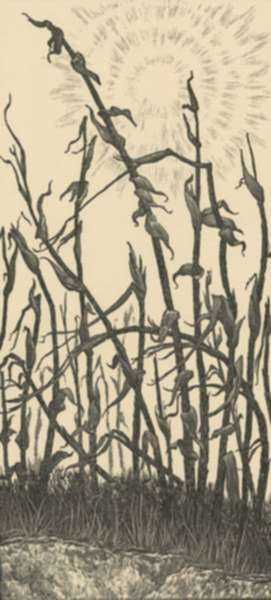
Leo Meissner
American (1895-1977)
Leo J(ohn) Meissner, American (1895-1977)
Leo Meissner was born in Hamtramck, Michigan in 1895 in the heart of the newly industrialized areas around Detroit. He enrolled at age fifteen in the Detroit Fine Art Academy where he studied with John P. Wicker (1860-1931). The exigencies of study without a scholarship or much financial support from his Bohemian immigrant parents, led young Leo to have to balance schooling in art with working odd jobs. He made his way from about 1910 until he enlisted in World War I between learning about art under Wicker and working to support his schooling. On the troop ship to France, Meissner fell in love with the turbulent swells of the Atlantic and decided that it would be a fine subject for painting. He pursued the sea as a major theme in his painting and printmaking for the rest of his life. After the war, Meissner continued to study at the Detroit Fine Art Academy where he won a scholarship to the Art Students League in New York. There he was able to study painting with Robert Henri and George Luks. With his new-found skills he got a job as assistant art director on the magazine Charm. By 1923 he was established enough at his job and had saved enough money to take a vacation. He had heard that the coast of Maine would provide good subject matter for a young artist who wanted to sharpen his skills in drawing and painting rocks, surf, and sea. After the night boat to Boston he headed to Boothbay Harbor, Maine and shortly thereafter took a fishing boat to Monhegan Island.
As he later recalled in a 1969 interview with Isabel Currier for Down East, “ Monhegan was definitely the place I was looking for. The cliffs and surf and huge arch of twinkling stars overhead were completely new discoveries to the boy from New York.” In that first summer he lived in a shack below White Head (one of the most famous of Monhegan’s headlands) where he could draw and paint unmolested. He returned to New York with sketches and drawings that were to be the basis for a year’s work of painting—and the determination to save enough money to return to Monhegan the following year.
Meissner returned to Monhegan virtually every year for more than a half century. Although he supported himself in New York first at Charm magazine and later Motor Boating magazine and maintained a residence in Yonkers, New York, he was most closely identified with Monhegan Island where he married a girl he had met on the island and eventually owned two matching houses there. He retired from magazine work in 1950 to devote his entire artistic effort to his own work—principally wood engraving in the 1950s and 1960s. Islanders on Monhegan often found themselves outnumbered in the summer by the artists from New York. Isabel Currier, however reported that one of them avowed that he was considered “one of our own. Leo Meissner’s an awful hard worker; starts early every morning and never stops… he’s a city fellow, but he’s no slicker; a homey man, easy to talk to…his pictures make something you see every day look wonderful…can’t remember the island in summer without Leo, but he doesn’t seem to have changed much in all the years he’s been here.”
Currier continued: “The unpretentious, serenely happy object of these plaudits is one of those wiry men, slight and trim of figure, who is unlikely to have altered greatly through the years, although his close-cropped, receding hair is gray and the deeply etched lines in his angular face bespeak and asceticism that seldom is evident in youth. His scholarly countenance is warmed by deepset, alert eyes, which reflect both Meissner’s response to people and absorption with what he sees. It is true that his working day on Monhegan starts at about 6:30 in the morning, and he remains shut up in his studio—in a small building across the garden from the back door of his home—until about 1 p.m. when his wife calls him to lunch.”
Although Meissner was a fine painter in oil and an even more skilled pastellist, it is his mastery of woodcut, linoleum block and wood engraving that makes him the notable artist he is today. The relief block prints that Meissner produced to great acclaim—he was included four times in 50 Prints of the Year (1927-28-29 and 1933)—were exhibited in virtually every American printmaking exhibition venue. In his career of over fifty years, Meissner produced more than 150 relief prints which were exhibited in over 60 one-man shows. In 1963 there was a major retrospective which included 72 of his works at Bates College in Lewiston, Maine. He took prizes for printmaking at the Library of Congress (1943, 1945); Wichita, Kansas (1937); Southern Printmakers (1937, 1938); Detroit Institute of Art (1943, 1945); as well as many other institutions. His landscape subjects are principally drawn from New York City, the Maine coast and Monhegan Island, rural North Carolina, southern Florida, and Arizona.
Although Monhegan was the center of his artistic life and printmaking subjects for most of a half-century, Meissner also made brilliant Manhattan subjects in the 1920s and 1930s including the Plaza Hotel, Future New York, studies of Greenwich Village and scenes of life in a bygone lower Manhattan. In the early 1950s he spent time in North Carolina’s Great Smoky Mountains where he chose mountain cabins, rural farms and rushing mountain streams as subjects. He then spent a season in Arizona in and around the Oracle Mountains where he contrasted his previous work in the lush mountains of North Carolina with the craggy, arid beauty of the desert landscape and flora.
In addition to his personal printmaking, Meissner instituted the Leo J. Meissner prize in printmaking at the National Academy of Design for excellence in printmaking. The prize over the last few decades has been awarded to many of the most distinguished living American printmakers. His prints are widely held in American museums including: the Metropolitan Museum of Art, Library of Congress, New York Public Library, Detroit Institute, Baltimore Museum of Art, Currier Gallery, Farnsworth Museum, Philadelphia Museum of Art, Smith College Museum of Art, Bates College Museum of Art, University of Michigan Museum of Art, University of Maine Museum of Art and others.
Meissner was first an associate and then a full academician member of the National Academy of Design, as well as the Audubon Artists, Society of American Graphic Artists, the Print Club of Albany, Boston Print Makers, Michigan Academy of Science, Arts and Letters, the Prairie Print Makers, Old Bergen Art Guild, Salmagundi Club, Philadelphia Print Club, Boston Society of Independent Artists, Audubon Artists, and many others. He was listed in the American and International Who's Who and currently has an extensive entry in Who Was Who in American Art (1999).
Works by Leo Meissner
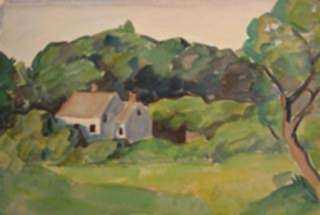
Beatrice Whitney Van Ness
American, (1888-1981)
Beatrice Whitney Van Ness, Acclaimed painter and art educator, dedicated her life to the process of learning. As a student at the School of the Museum of Fine Arts, Boston with Frank Benson and Edmund Tarbell and at Ogunquit, Maine with Charles Woodbury, she gained great proficiency as a painter. After a decade of prizes and awards she dedicated her life to art education. Van Ness taught classes at the Museum of Fine Arts in Boston, and then founded the art department at the Beaver Country Day School outside Boston. Her pioneering work ultimately inspired many of the first art education programs in public schools. From the mid-1920’s, because of her teaching commitments, Van Ness painted primarily in the summers in Maine. The area radiated a brilliant summer heat, which she explored continually through light and pattern. These works of brilliant color and design evoke the rhythmic atmosphere, revealing her modern interest in the process of painting itself.
Van Ness’ works range from her sensuously modeled single figures of the middle and late teens to the brilliantly toned family groups painted at Bartlett’s Harbor in the 1920’s and 1930’s. However, these trace only the beginning of her experimentation with the qualities of light and reflection. Her later work in all media shows her intense search for innovative techniques to exploit special qualities of light. She sanded, scraped, and reworked many of her oils and watercolors, revealing white canvas or watercolor paper shimmering beneath her pigments.
She worked intensely until her 91st birthday. She died in Brookline, Massachusetts on February 11, 1981. Her works have been in many national exhibitions including at the Carnegie Institute, Pittsburgh; Corcoran Gallery of Art, Washington D.C.; Museum of Fine Arts, Boston; National Academy of design, New York; and the Pennsylvania Academy of Fine Arts. Her works are also included in many public and private collections including the National Museum of Women in the Arts, Washington D. C.; the National Academy of Design, New York; Colby College, Waterville, Maine; and the Farnsworth Museum of Art, Rockland, Maine to name a few.
Works by Beatrice Whitney Van Ness
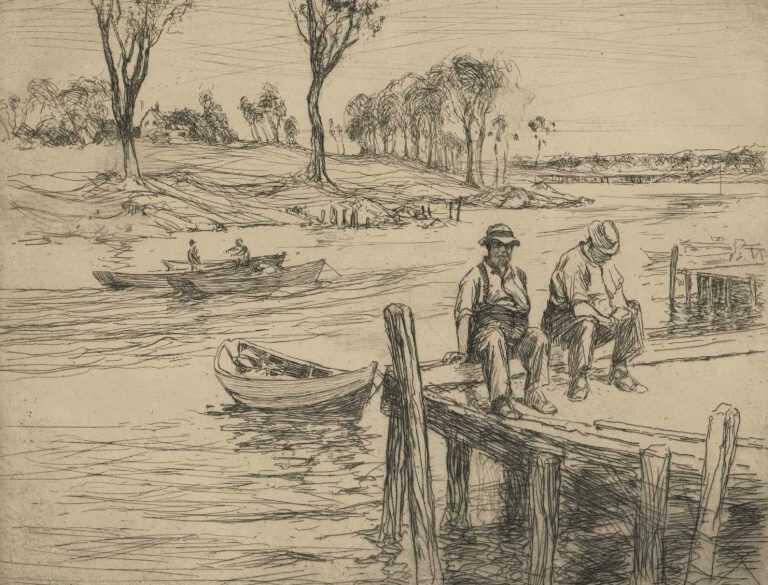
Charles Woodbury
American (1864-1940)
Charles H. Woodbury was born in 1864 in Lynn, Massachusetts, where his earliest work was part of the oeuvre of the group later known as the Lynn Beach Painters. While an undergraduate he became a regular exhibitor at, and at 19 the youngest member of, the Boston Art Club. After graduation from the Massachusetts Institute of Technology in 1886 Woodbury had great success painting up the New England coast and in the towns and beaches of Nova Scotia and exhibiting the results. In 1891 he went to Holland, where he studied the techniques of the modern Dutch painters. Upon his return to New England he settled in Boston for his winter studio and spent his summers in the small fishing village of Ogunquit, Maine; there he founded one of the most successful of the summer art colony schools that even survived his death. He was one of the most sought-after teachers of his generation, having begun teaching on a regular basis while a freshman at M.I.T. Ironically, he had little formal training himself other than a few months of classes at the Academy Julian in Paris. Like Winslow Homer, another New England painter with an affinity for summers in Maine, he preferred "to work out his salvation with little help from others in his profession". Nevertheless, Woodbury maintained a close friendship with John Singer Sargent and a pleasant acquaintance with many of his contemporaries including J. Alden Weir and Childe Hassam. He maintained a strong and consistent vision in his more than fifty years of professional life and became a master of compositions of the coast and sea. Woodbury’s many on-the-spot sketches and etchings produce a sense of motion through quick, sure-handed strokes. Seeing and understanding movement was fundamental to his art and teaching, and is reflected in his own maxim: “Paint in verbs, not nouns.” In the words of his son David, Woodbury "...painted what he saw, satisfied that what he saw was really there, all in proper relationship, checked and rechecked by endless reference to the real world".
In his later years he spent his winters in the Caribbean sailing from island to island painting watercolor studies of the beaches and town backed by dramatic mountains and clouds. Over a large part of his career he made some of the most expressive etchings of any American artist of his time, completing more than 500 plates and teaching many younger artists to express themselves in this medium. He died on January 21, 1940 in Jamaica Plain, Massachusetts.
Woodbury engaged in over 100 solo exhibitions throughout his career, and was included in all of the major invitational and juried shows throughout the country. His work may be found currently in The Art Institute of Chicago, The Museum of Fine Arts in Boston, and New York’s Metropolitan Museum of Art among many others.
See:
Howlett, D. Roger. “The Lynn Beach Painters.” Boston: Copley Square Press, 1998.
Loria, Joan, and Warren A. Seamans. “Earth, Sea and Sky – Charles H. Woodbury – Artist and Teacher, 1864-1940,” exhibition catalogue. Cambridge, Massachusetts: The MIT Museum, 1998.










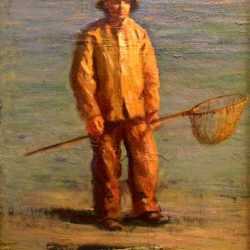
![Painting By William Partridge Burpee: [fisherman And Dory] At Childs Gallery](https://childsgallery.com/wp-content/uploads/william_partridge_burpee_fisherman_and_dory_cgl26343-27_childs_gallery-250x250.jpg)
![Pastel By William Partridge Burpee: [apple Blossoms In Landscape] At Childs Gallery](https://childsgallery.com/wp-content/uploads/william_partridge_burpee_apple_blossoms_in_landscape_bb1335-06_childs_gallery-250x250.jpg)
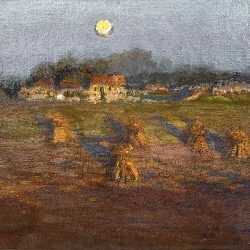
![Painting By William Partridge Burpee: [monhegan] At Childs Gallery](https://childsgallery.com/wp-content/uploads/william_partridge_burpee_monhegan_x273_childs_gallery-250x250.jpg)
![Watercolor by William Partridge Burpee: [Sunset with Sailboats], represented by Childs Gallery](https://childsgallery.com/wp-content/uploads/william_partridge_burpee__sunset_with_sailboats__12-16-02_childs_gallery-250x250.jpg)
![Pastel By William Partridge Burpee: [trees Near The Shore] At Childs Gallery](https://childsgallery.com/wp-content/uploads/william_partridge_burpee_trees_near_the_shore_12-16-03_childs_gallery-250x250.jpg)
![Pastel By William Partridge Burpee: [steamship] At Childs Gallery](https://childsgallery.com/wp-content/uploads/william_partridge_burpee_steamship_12-16-04_childs_gallery-250x250.jpg)
![Pastel By William Partridge Burpee: [blossoming Trees] At Childs Gallery](https://childsgallery.com/wp-content/uploads/william_partridge_burpee_blossoming_trees_12-16-06_childs_gallery-250x250.jpg)
![Painting By William Partridge Burpee: [fisherman's Daughter] At Childs Gallery](https://childsgallery.com/wp-content/uploads/william_partridge_burpee_fishermans_daughter_cgl26343-57_childs_gallery-250x250.jpg)
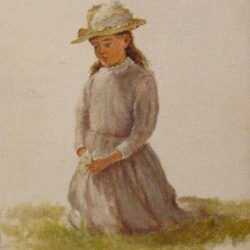
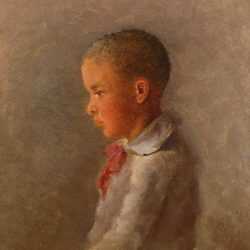
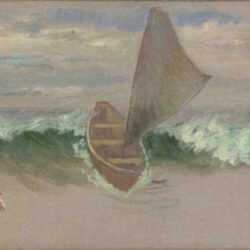
![Pastel By William Partridge Burpee: [wooded Landscape With Pond] At Childs Gallery](https://childsgallery.com/wp-content/uploads/william_partridge_burpee_wooded_landscape_with_pond_bb27398t-01_childs_gallery-250x250.jpg)
![Pastel By William Partridge Burpee: [winter Landscape] At Childs Gallery](https://childsgallery.com/wp-content/uploads/william_partridge_burpee_winter_landscape_bb27398t-02_childs_gallery-250x250.jpg)
![Pastel By William Partridge Burpee: [landscape With Castle And River] At Childs Gallery](https://childsgallery.com/wp-content/uploads/william_partridge_burpee_landscape_with_castle_and_river_bb27398t-04_childs_gallery-250x250.jpg)
![Pastel By William Partridge Burpee: [woman Reading] At Childs Gallery](https://childsgallery.com/wp-content/uploads/william_partridge_burpee_woman_reading_cgl57198-107-01-050f_childs_gallery-250x250.jpg)
![Pastel By William Partridge Burpee: [snow Covered Alps] At Childs Gallery](https://childsgallery.com/wp-content/uploads/william_partridge_burpee_snow-covered_alps_02-01-02_childs_gallery-250x250.jpg)
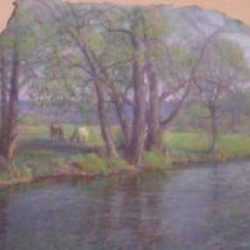
![Pastel by William Partridge Burpee: [Moonlight on Crashing Waves], represented by Childs Gallery](https://childsgallery.com/wp-content/uploads/william_partridge_burpee__moonlight_on_crashing_waves__02-01-08_childs_gallery-250x250.jpg)
![Pastel by William Partridge Burpee: [Rocky Coast with Fir Trees], represented by Childs Gallery](https://childsgallery.com/wp-content/uploads/william_partridge_burpee__rocky_coast_with_fir_trees__02-01-09_childs_gallery-250x250.jpg)
![Pastel by William Partridge Burpee: [Sand Dunes], represented by Childs Gallery](https://childsgallery.com/wp-content/uploads/william_partridge_burpee__sand_dunes__02-01-13_childs_gallery-250x250.jpg)
![Pastel By William Partridge Burpee: [crashing Waves,rocks] At Childs Gallery](https://childsgallery.com/wp-content/uploads/william_partridge_burpee_crashing_wavesrocks_02-01-17_childs_gallery-250x250.jpg)
![Watercolor By William Partridge Burpee: [doorway In Morocco] At Childs Gallery](https://childsgallery.com/wp-content/uploads/william_partridge_burpee_doorway_in_morocco_cgl27390r_childs_gallery-250x250.jpg)
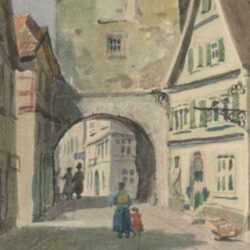
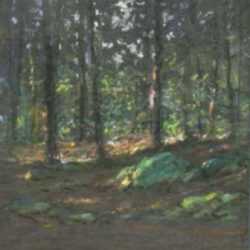
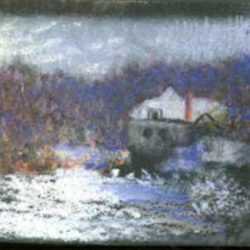
![Painting By William Partridge Burpee: [female Nude With Garland] At Childs Gallery](https://childsgallery.com/wp-content/uploads/william_partridge_burpee_female_nude_with_garland_cgl26343-105a_childs_gallery-250x250.jpg)
![Painting by William Partridge Burpee: [Female Nude], represented by Childs Gallery](https://childsgallery.com/wp-content/uploads/william_partridge_burpee__female_nude__cgl26343-105b_childs_gallery-250x250.jpg)
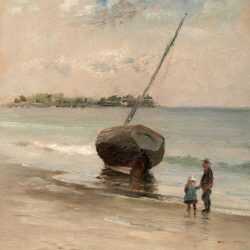
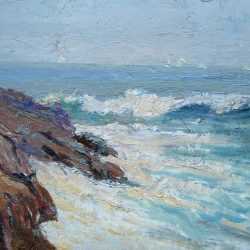
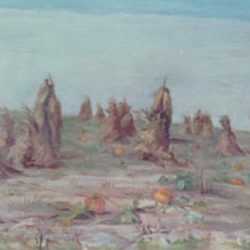
![Pastel By William Partridge Burpee: [blue Rocky Mountain] At Childs Gallery](https://childsgallery.com/wp-content/uploads/william_partridge_burpee_blue_rocky_mountain_cgl26343-517_childs_gallery-250x250.jpg)
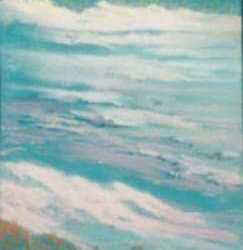
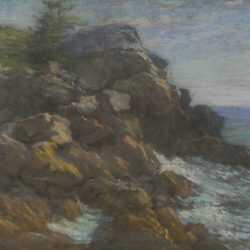
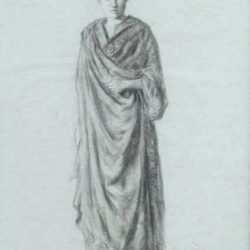
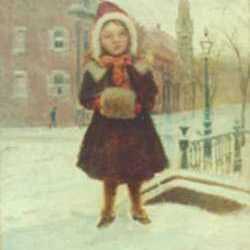
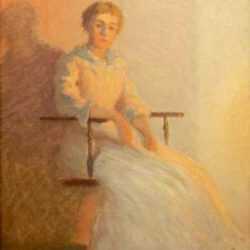
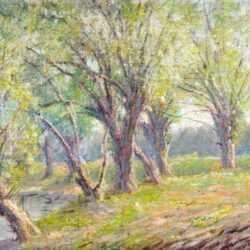
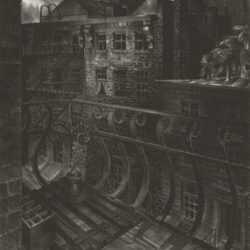
![Print by Stow Wengenroth: The House [East Port, Maine], represented by Childs Gallery](https://childsgallery.com/wp-content/uploads/stow_wengenroth_the_house__east_port__maine__09-02-718_childs_gallery-250x250.jpg)
![Print by Stow Wengenroth: Early Summer [Bayport, New York], represented by Childs Gallery](https://childsgallery.com/wp-content/uploads/stow_wengenroth_early_summer__bayport__new_yor_pcgl57262-50_childs_gallery-1-250x250.jpg)
![Print by Stow Wengenroth: Serenity [Litchfield Connecticut], represented by Childs Gallery](https://childsgallery.com/wp-content/uploads/stow_wengenroth_serenity__litchfield_connectic_pcgl57595-25_childs_gallery-250x250.jpg)
![Print by Stow Wengenroth: Quiet Grove [Ognunquit, Maine], represented by Childs Gallery](https://childsgallery.com/wp-content/uploads/stow_wengenroth_quiet_grove__ognunquit__maine__pcgl57595-28_childs_gallery-250x250.jpg)
![Print by Stow Wengenroth: Ebb Tide [Port Clyde, Maine], represented by Childs Gallery](https://childsgallery.com/wp-content/uploads/stow_wengenroth_ebb_tide__port_clyde__maine__pcgl57220_childs_gallery-250x250.jpg)
![Drawing by Stow Wengenroth: Straitsmouth Light, [Rockport, Massachusetts], represented by Childs Gallery](https://childsgallery.com/wp-content/uploads/stow_wengenroth_straitsmouth_light___rockport__clc14353-72t-34_childs_gallery-250x250.jpg)
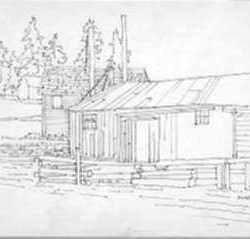
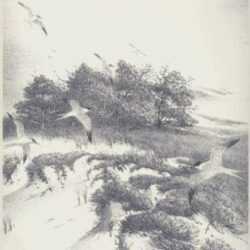
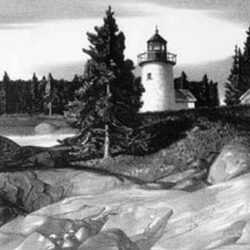
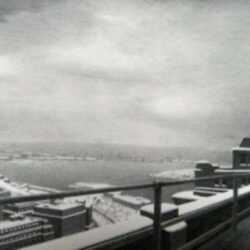
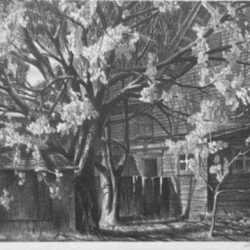
![Print by Stow Wengenroth: The White Fence [Rockport, Massachusetts], represented by Childs Gallery](https://childsgallery.com/wp-content/uploads/stow_wengenroth_the_white_fence__rockport__mas_p3073-04_childs_gallery-250x250.jpg)
![Print by Stow Wengenroth: Early Morning [Rockport, Massachusetts], represented by Childs Gallery](https://childsgallery.com/wp-content/uploads/stow_wengenroth_early_morning__rockport__massa_p1107-5_childs_gallery-250x199.jpg)
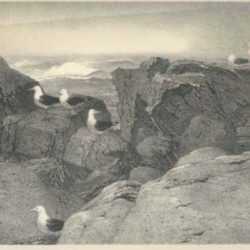
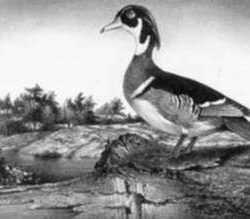
![Print by Stow Wengenroth: Ruffed Grouse [Bayport, New York], represented by Childs Gallery](https://childsgallery.com/wp-content/uploads/stow_wengenroth_ruffed_grouse__bayport__new_yo_p2154-2_childs_gallery-250x217.jpg)
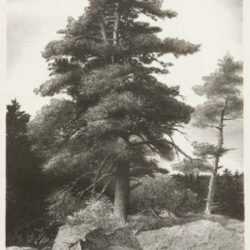
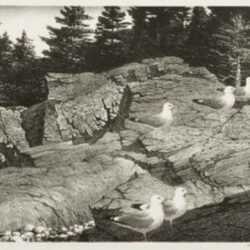
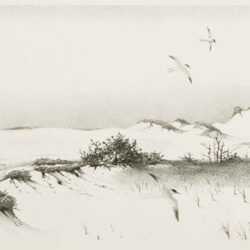
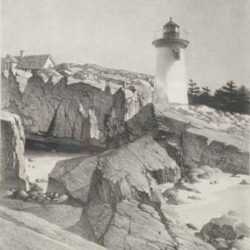


![Watercolor by Letterio Calapai: [Portrait of a Woman with Head in Hand], available at Childs Gallery, Boston](https://childsgallery.com/wp-content/uploads/letterio-calapai_portrait-of-a-woman-with-head-in-hand_bb1345-03_childs_gallery_48240-250x250.jpg)
![Watercolor by Letterio Calapai: [Two Women], available at Childs Gallery, Boston](https://childsgallery.com/wp-content/uploads/letterio-calapai_two-women_bb1345-06_childs_gallery_48236-250x250.jpg)


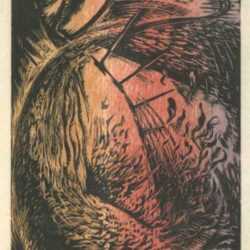
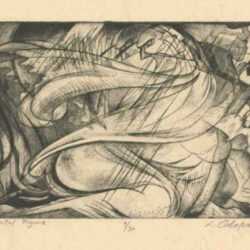
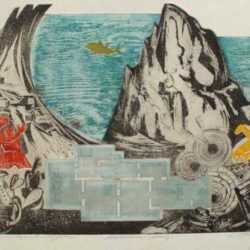
![Print by Letterio Calapai: The Intruder [2nd edition], represented by Childs Gallery](https://childsgallery.com/wp-content/uploads/letterio_calapai_the_intruder__2nd_edition__11-30-42_childs_gallery-250x250.jpg)
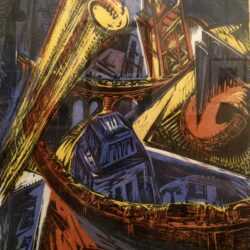
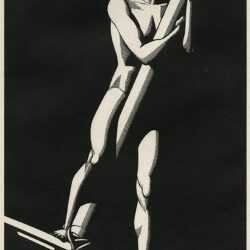
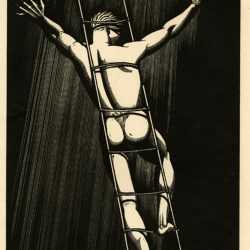
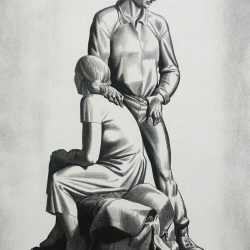
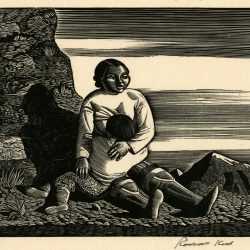
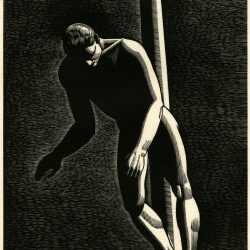
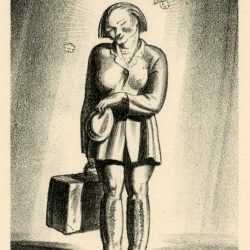
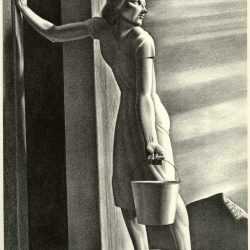
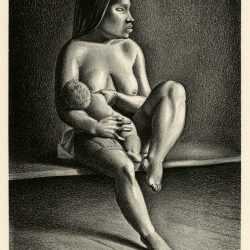
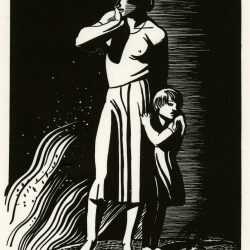
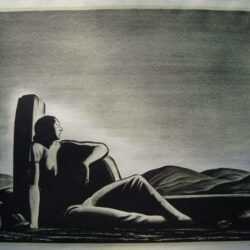
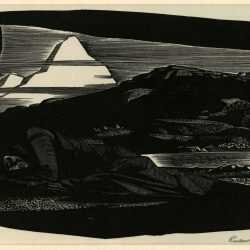
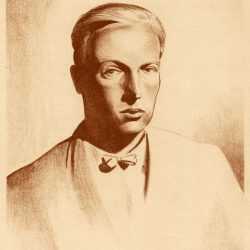
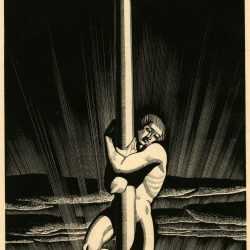
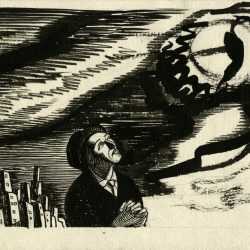
![Drawing By Rockwell Kent: [the Lookout, Related Studies] At Childs Gallery](https://childsgallery.com/wp-content/uploads/rockwell_kent_the_lookout_related_studies_08-35-04_childs_gallery-250x250.jpg)
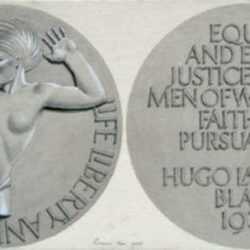
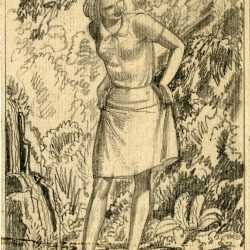
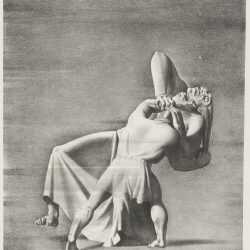
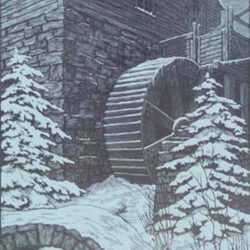
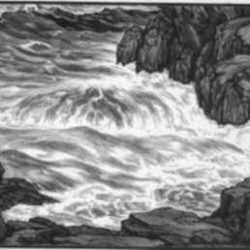
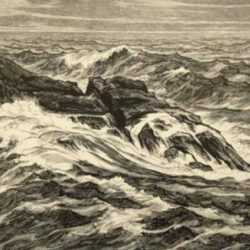
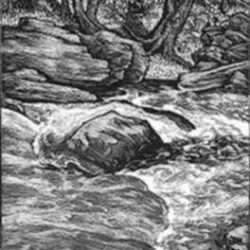
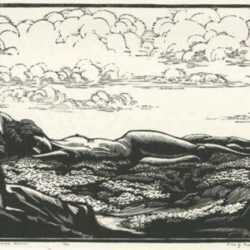
![Print by Leo Meissner: Memories of St. Augustine [Florida], represented by Childs Gallery](https://childsgallery.com/wp-content/uploads/leo_meissner_memories_of_st._augustine__flo_79-36-227-8_childs_gallery-250x250.jpg)
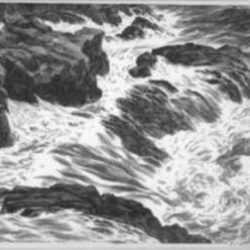
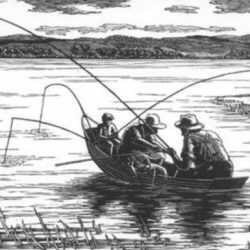
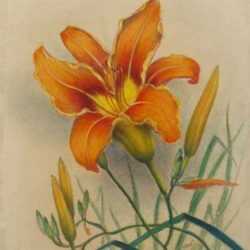
![Drawing by Leo Meissner: Hong Kong Orchids, Anna Maria [Florida], represented by Childs Gallery](https://childsgallery.com/wp-content/uploads/leo_meissner_hong_kong_orchids__anna_maria__79-36-290_childs_gallery-250x250.jpg)
![Drawing by Leo Meissner: Sandy Beach Gulf Coast, near Sanibel, Fla. [Florida], represented by Childs Gallery](https://childsgallery.com/wp-content/uploads/leo_meissner_sandy_beach_gulf_coast__near_s_79-36-291_childs_gallery-250x226.jpg)
![Drawing by Leo Meissner: [A Work in Progress], represented by Childs Gallery](https://childsgallery.com/wp-content/uploads/leo_meissner__a_work_in_progress__79-36-295_childs_gallery-250x250.jpg)
![Pastel by Leo Meissner: [Standing Female Nude], available at Childs Gallery, Boston](https://childsgallery.com/wp-content/uploads/leo-meissner_standing-female-nude_childs_gallery_15816-250x250.jpg)
![Drawing by Leo Meissner: [Female Nude Stretching], represented by Childs Gallery](https://childsgallery.com/wp-content/uploads/leo_meissner__female_nude_stretching__79-36-301_childs_gallery-250x250.jpg)
![Drawing by Leo Meissner: The Red House, Monhegan [Maine], represented by Childs Gallery](https://childsgallery.com/wp-content/uploads/leo_meissner_the_red_house__monhegan__maine_79-36-307_childs_gallery-250x250.jpg)
![Drawing by Leo Meissner: Monhegan Light [Monhegan Island, Maine], represented by Childs Gallery](https://childsgallery.com/wp-content/uploads/leo_meissner_monhegan_light__monhegan_islan_79-36-308_childs_gallery-250x250.jpg)
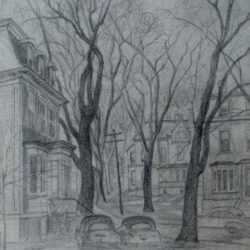
![Drawing by Leo Meissner: [Churchyard], represented by Childs Gallery](https://childsgallery.com/wp-content/uploads/leo_meissner__churchyard__79-36-310_childs_gallery-250x250.jpg)
![Drawing by Leo Meissner: [Trees in the Snow], represented by Childs Gallery](https://childsgallery.com/wp-content/uploads/leo_meissner__trees_in_the_snow__79-36-311_childs_gallery-250x250.jpg)
![Drawing by Leo Meissner: [Mountain Range, North Carolina], represented by Childs Gallery](https://childsgallery.com/wp-content/uploads/leo_meissner__mountain_range__north_carolin_79-36-315_childs_gallery-250x250.jpg)
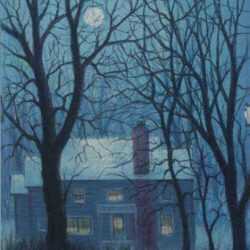
![Pastel by Leo Meissner: [Snowy Bough], represented by Childs Gallery](https://childsgallery.com/wp-content/uploads/leo_meissner__snowy_bough__79-36-319_childs_gallery-250x250.jpg)
![Drawing by Leo Meissner: On Road Back from Oneonta [New York], represented by Childs Gallery](https://childsgallery.com/wp-content/uploads/leo_meissner_on_road_back_from_oneonta__new_79-36-323_childs_gallery-250x250.jpg)
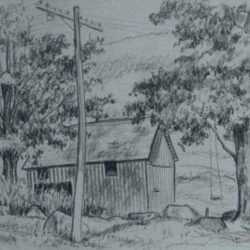
![Drawing by Leo Meissner: [Monhegan Houses, Maine], represented by Childs Gallery](https://childsgallery.com/wp-content/uploads/leo_meissner__monhegan_houses__maine__79-36-326_childs_gallery-250x250.jpg)
![Drawing by Leo Meissner: [Mountain Farm, North Carolina], represented by Childs Gallery](https://childsgallery.com/wp-content/uploads/leo_meissner__mountain_farm__north_carolina_79-36-342_childs_gallery-250x250.jpg)
![Pastel by Leo Meissner: [Cactus Country, Arizona], represented by Childs Gallery](https://childsgallery.com/wp-content/uploads/leo_meissner__cactus_country__arizona__79-36-361_childs_gallery-250x250.jpg)
![Drawing by Leo Meissner: [Trees, Rock and Cacti], represented by Childs Gallery](https://childsgallery.com/wp-content/uploads/leo_meissner__trees__rock_and_cacti__79-36-368_childs_gallery-250x250.jpg)
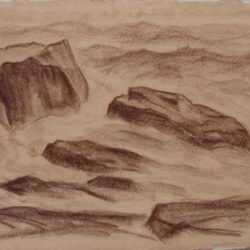
![Drawing by Leo Meissner: [Landscape with Island and Sky], represented by Childs Gallery](https://childsgallery.com/wp-content/uploads/leo_meissner__landscape_with_island_and_sky_79-36-389_childs_gallery-250x250.jpg)
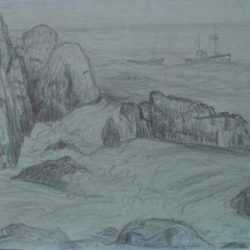
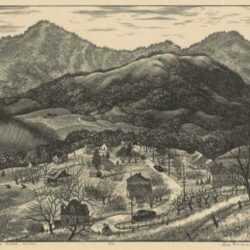
![Pastel by Leo Meissner: Oak Creek Canyon [Arizona], represented by Childs Gallery](https://childsgallery.com/wp-content/uploads/leo_meissner_oak_creek_canyon__arizona__05-09-01_childs_gallery-250x250.jpg)
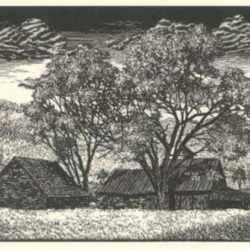
![Drawing by Leo Meissner: Rocks and Surf, Monhegan [Maine], represented by Childs Gallery](https://childsgallery.com/wp-content/uploads/leo_meissner_rocks_and_surf__monhegan__main_79-36-40_childs_gallery-250x250.jpg)
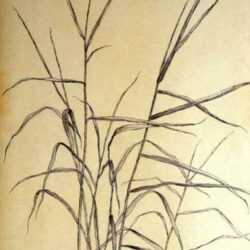
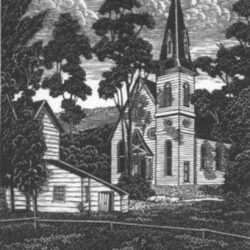
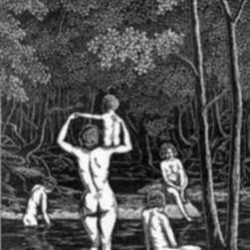

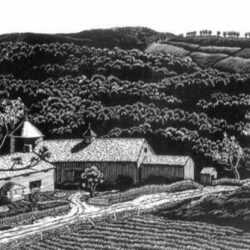
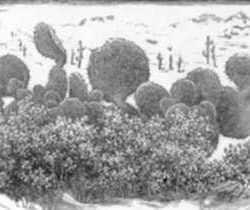
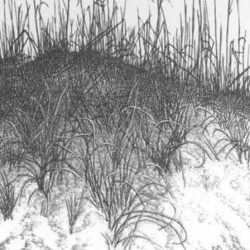
![Print by Leo Meissner: Jeter Spivey's Place [North Carolina] (unsigned), represented by Childs Gallery](https://childsgallery.com/wp-content/uploads/leo_meissner_jeter_spiveys_place__north_ca_79-36-131-28_childs_gallery-250x226.jpg)
![Print by Leo Meissner: Palm Beach Via [Florida], represented by Childs Gallery](https://childsgallery.com/wp-content/uploads/leo_meissner_palm_beach_via__florida__79-36-175-27_childs_gallery-217x250.jpg)
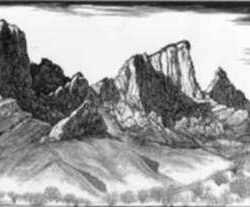
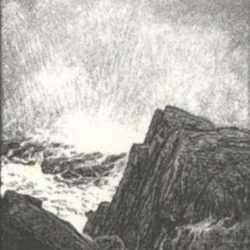
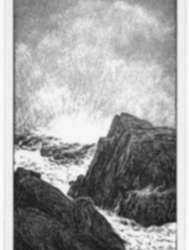
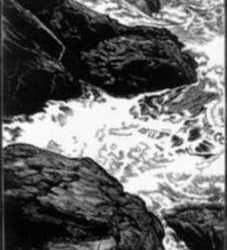
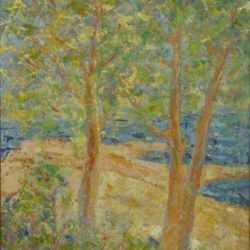
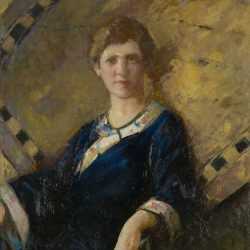
![Painting by Beatrice Whitney Van Ness: [Portrait of a Young Girl in Sun Bonnet], represented by Childs Gallery](https://childsgallery.com/wp-content/uploads/beatrice_whitney_van_ness__portrait_of_a_young_girl_in_s_cgl23061-033f_childs_gallery-250x250.jpg)
![Watercolor by Beatrice Whitney Van Ness: Fir Trees by the Sea [North Haven, Maine], represented by Childs Gallery](https://childsgallery.com/wp-content/uploads/beatrice_whitney_van_ness_fir_trees_by_the_sea__north_ha_cgl23061-252x_childs_gallery-250x244.jpg)
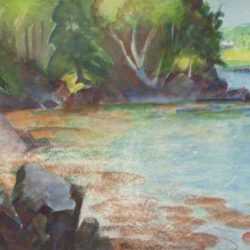
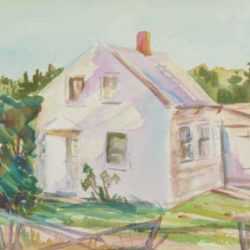
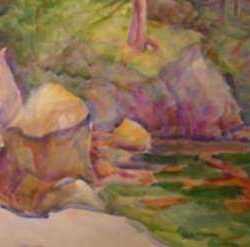
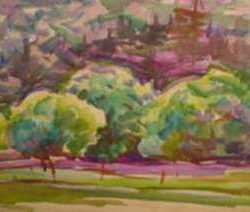
![Watercolor by Beatrice Whitney Van Ness: Houses by the Water (recto) [North Haven, Maine] verso: Two , represented by Childs Gallery](https://childsgallery.com/wp-content/uploads/beatrice_whitney_van_ness_houses_by_the_water__recto___n_cgl23061-279x_childs_gallery-250x229.jpg)
![Watercolor by Beatrice Whitney Van Ness: Burnished Rocks [North Haven, Maine], represented by Childs Gallery](https://childsgallery.com/wp-content/uploads/beatrice_whitney_van_ness_burnished_rocks__north_haven___cgl23061-281x_childs_gallery-250x232.jpg)
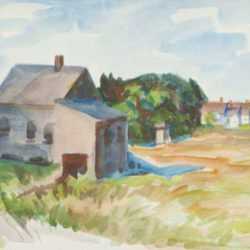
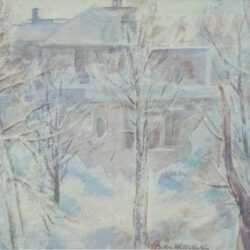
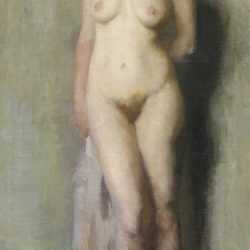
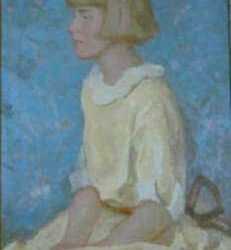
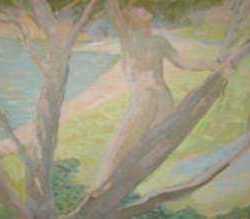
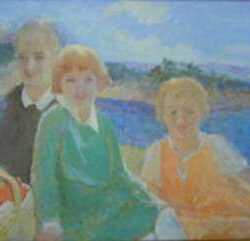
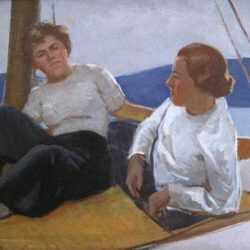
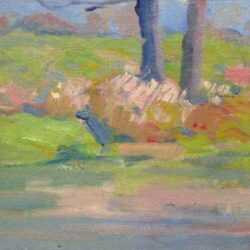
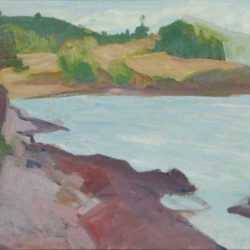
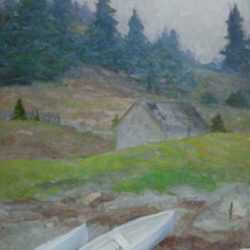
![Painting by Beatrice Whitney Van Ness: Fishing Boat, Maine [Bartlett Cove], represented by Childs Gallery](https://childsgallery.com/wp-content/uploads/beatrice_whitney_van_ness_fishing_boat__maine__bartlett__cgl23061-131_childs_gallery-250x250.jpg)
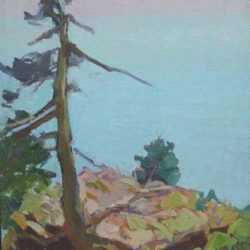
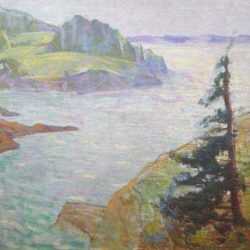
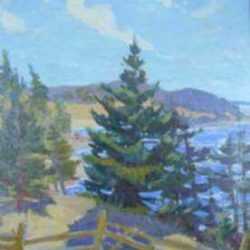
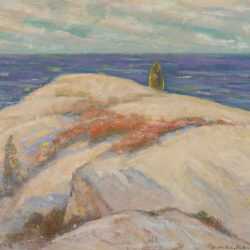
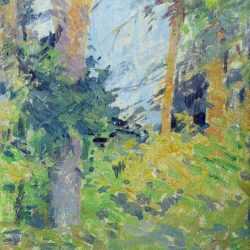
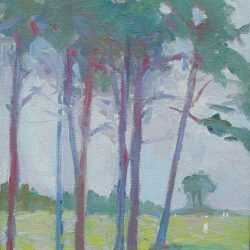
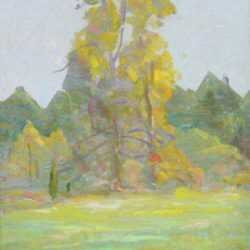
![Painting by Beatrice Whitney Van Ness: Marblehead [Massachusetts], represented by Childs Gallery](https://childsgallery.com/wp-content/uploads/beatrice_whitney_van_ness_marblehead__massachusetts__cgl23061-170_childs_gallery-1-250x250.jpg)
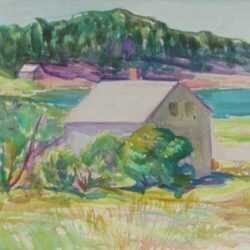
![Watercolor by Beatrice Whitney Van Ness: Maine Coast Mists [North Haven], represented by Childs Gallery](https://childsgallery.com/wp-content/uploads/beatrice_whitney_van_ness_maine_coast_mists__north_haven_cgl23061-205_childs_gallery-1-250x233.jpg)
![Watercolor by Beatrice Whitney Van Ness: Houses in Maine [North Haven], represented by Childs Gallery](https://childsgallery.com/wp-content/uploads/beatrice_whitney_van_ness_houses_in_maine__north_haven__cgl23061-231_childs_gallery-250x250.jpg)
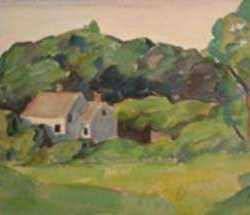
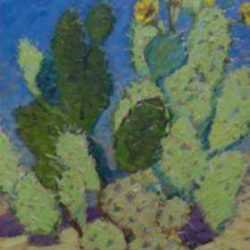
![Print By Charles Woodbury: [gates Of Harvard] At Childs Gallery](https://childsgallery.com/wp-content/uploads/charles_woodbury_gates_of_harvard_bb1791-04_childs_gallery-250x250.jpg)
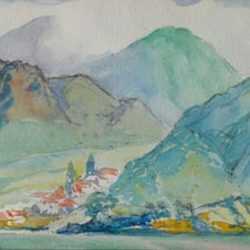
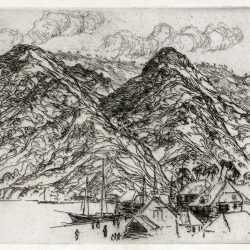
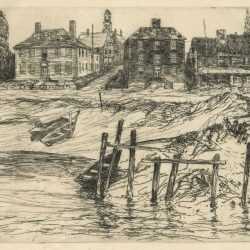
![Painting By Charles Woodbury: Surf At Ogunquit, Maine [early Ocean Attempt] At Childs Gallery](https://childsgallery.com/wp-content/uploads/charles_woodbury_surf_at_ogunquit_maine_early_ocean_attempt_cgl39302-1_childs_gallery-250x250.jpg)
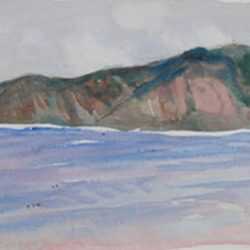
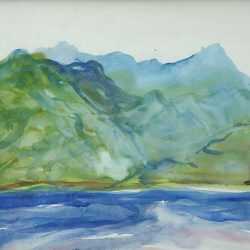
![Watercolor by Charles Woodbury: [Martinique], represented by Childs Gallery](https://childsgallery.com/wp-content/uploads/charles_woodbury__martinique__cgl54384-10_childs_gallery-250x250.jpg)
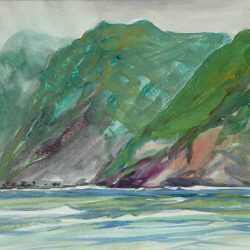
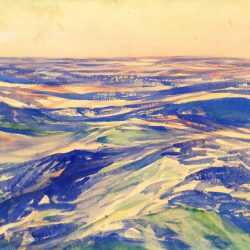
![Watercolor By Charles Woodbury: The Island Of Nevis [carribbean] At Childs Gallery](https://childsgallery.com/wp-content/uploads/charles_woodbury_the_island_of_nevis_carribbean_cgl28556-1r_childs_gallery-250x250.jpg)
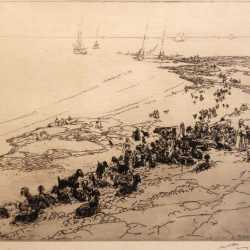
![Print by James McBey: Approaching New York No. 2 [View Onboard "The Majestic"], represented by Childs Gallery](https://childsgallery.com/wp-content/uploads/james_mcbey_approaching_new_york_no._2___v_pcgl57262-42r_childs_gallery-250x250.jpg)
